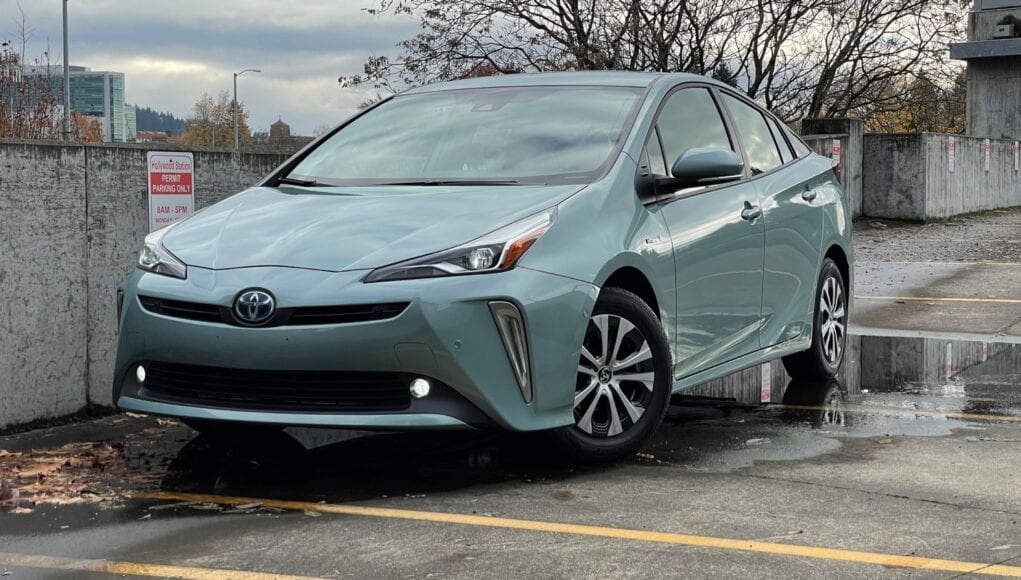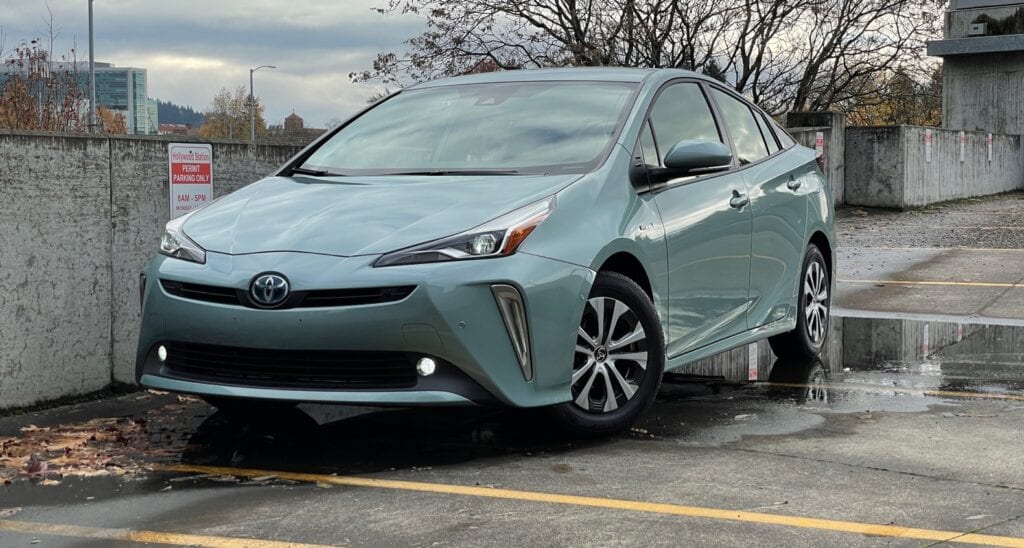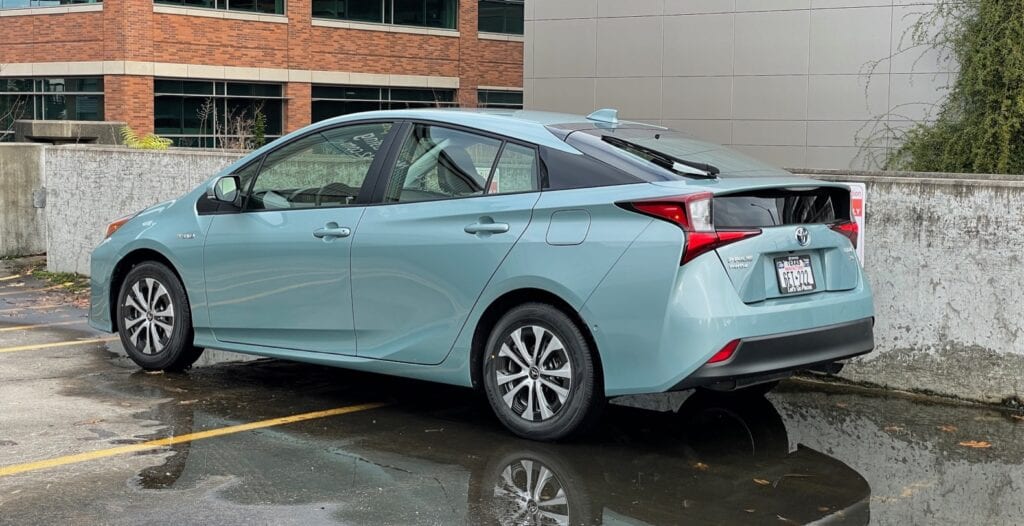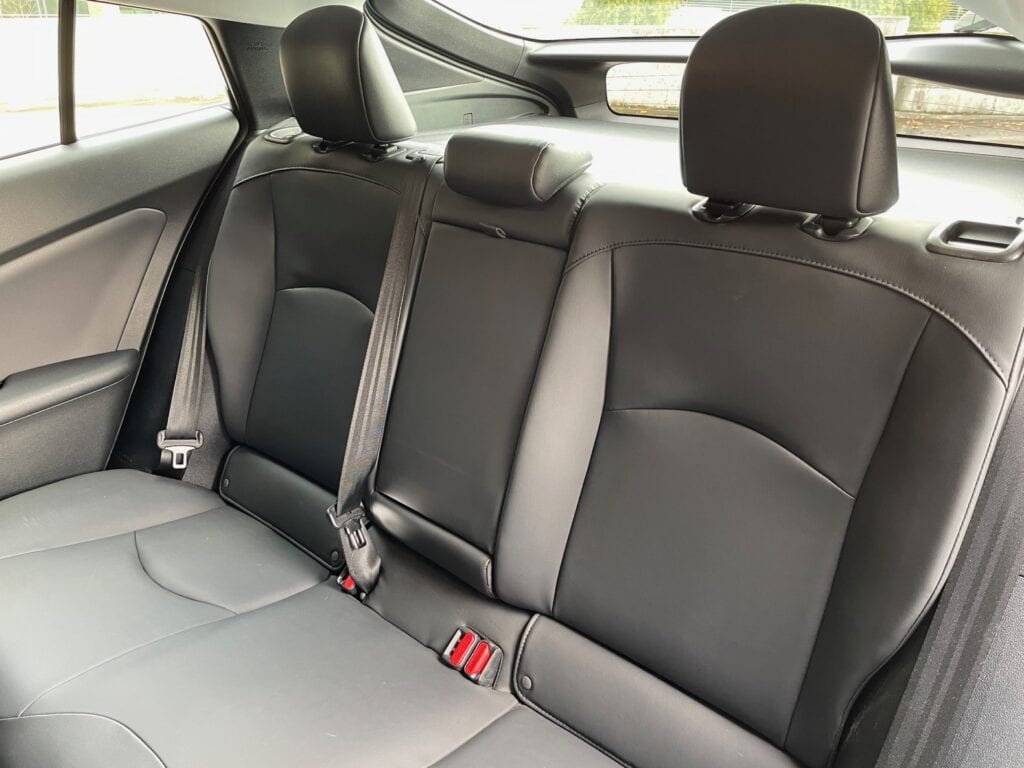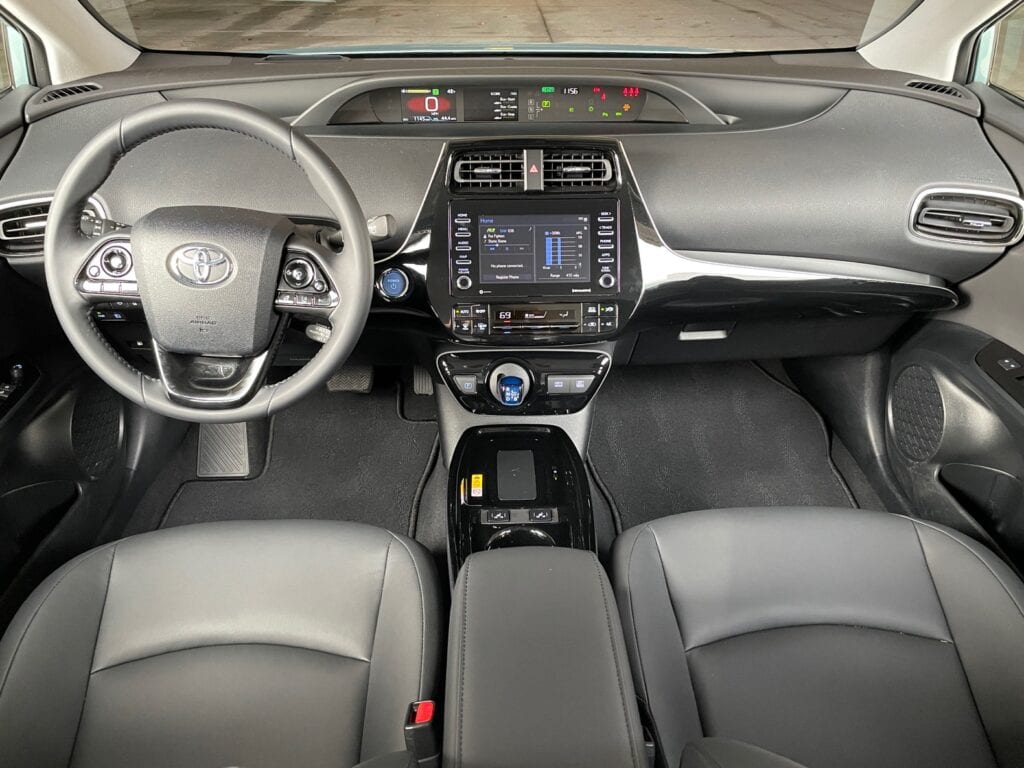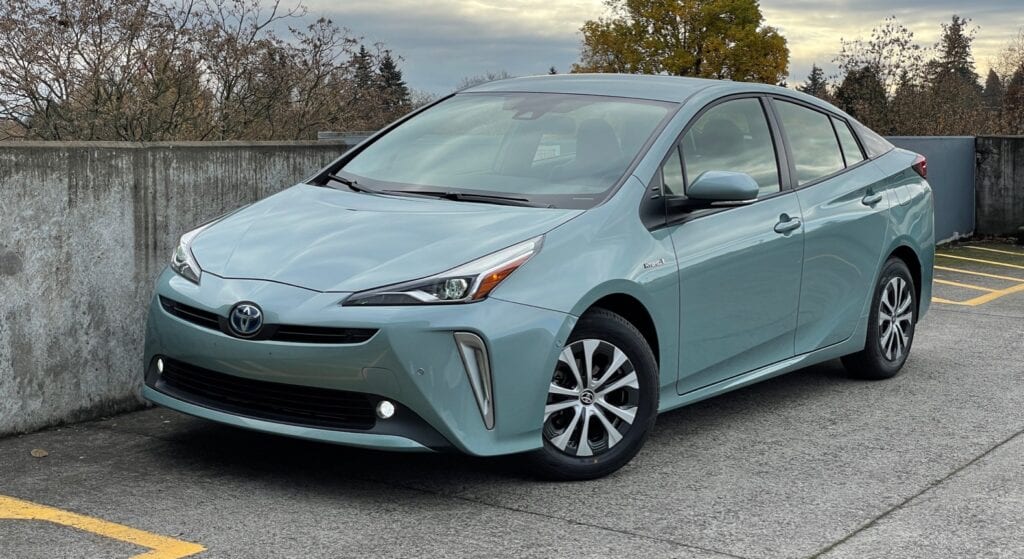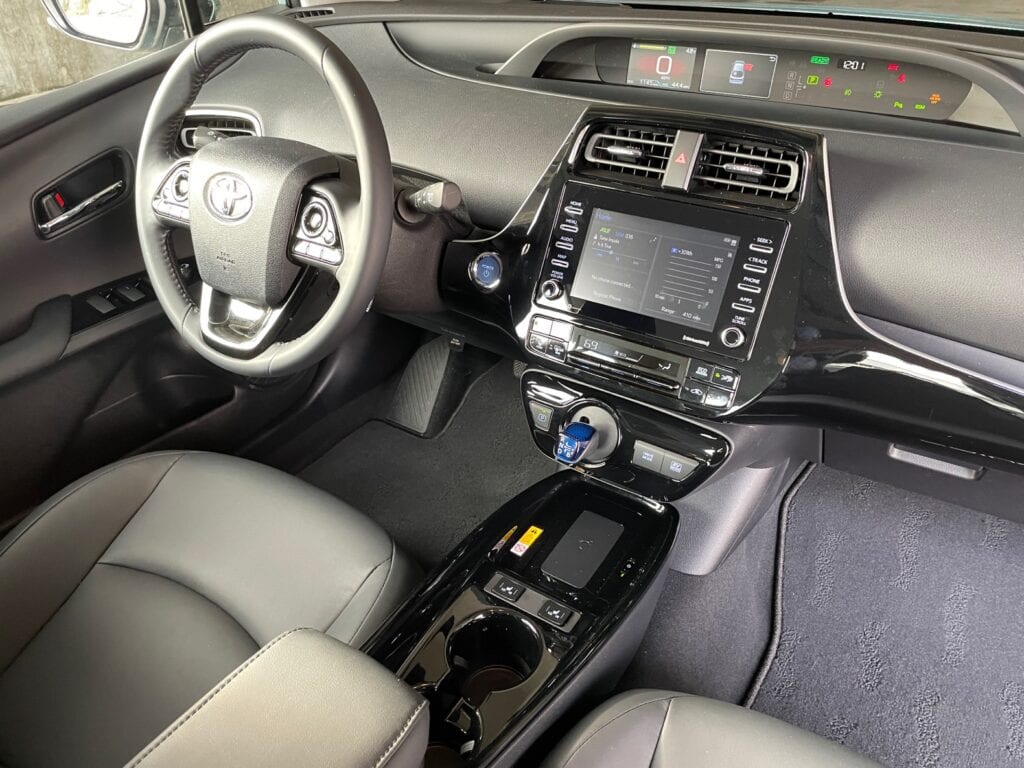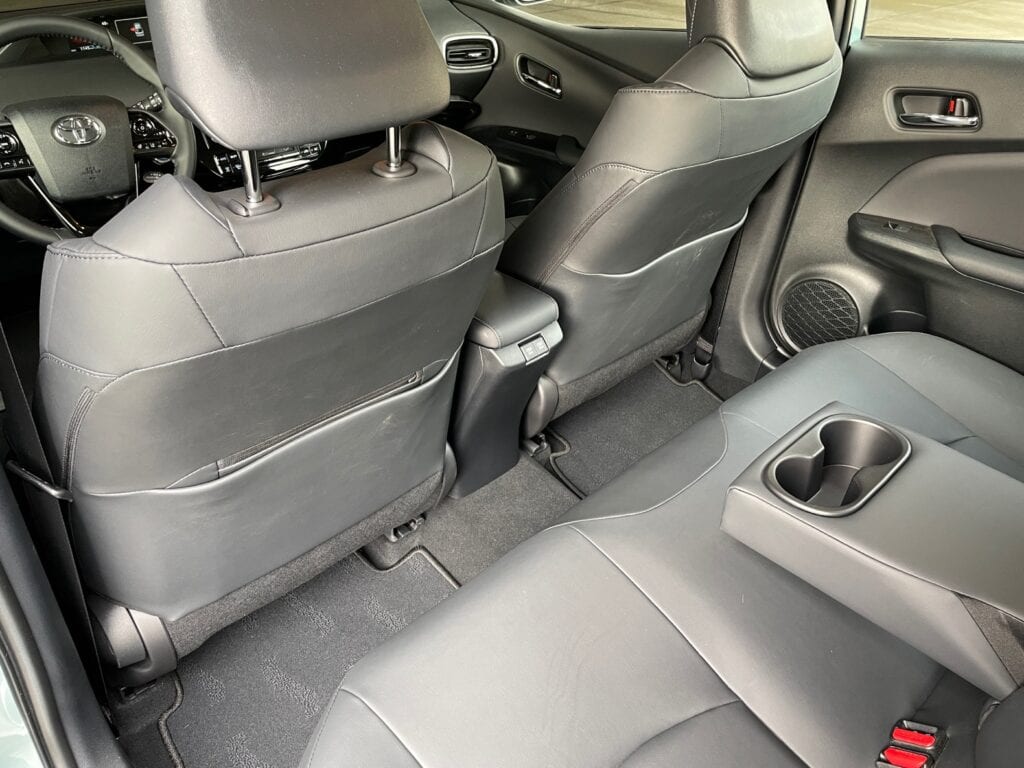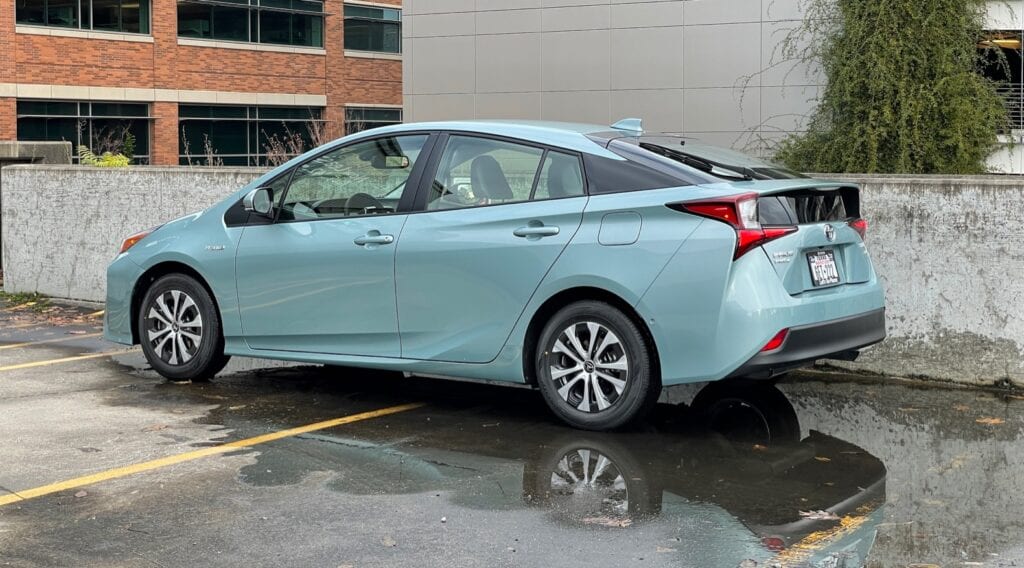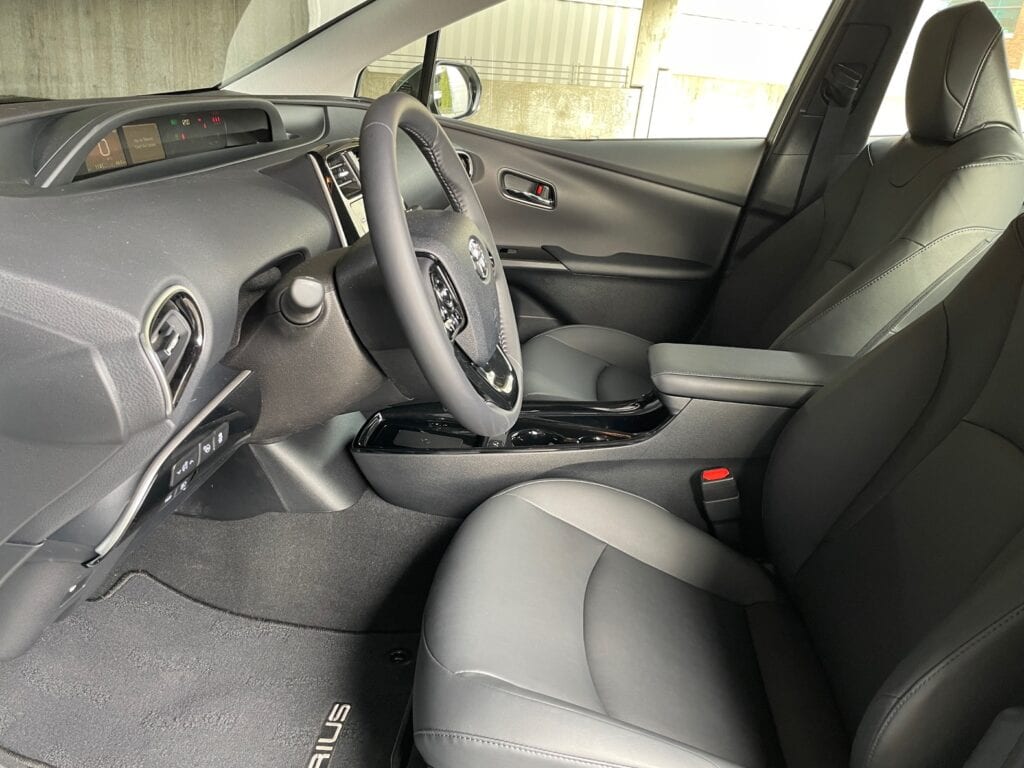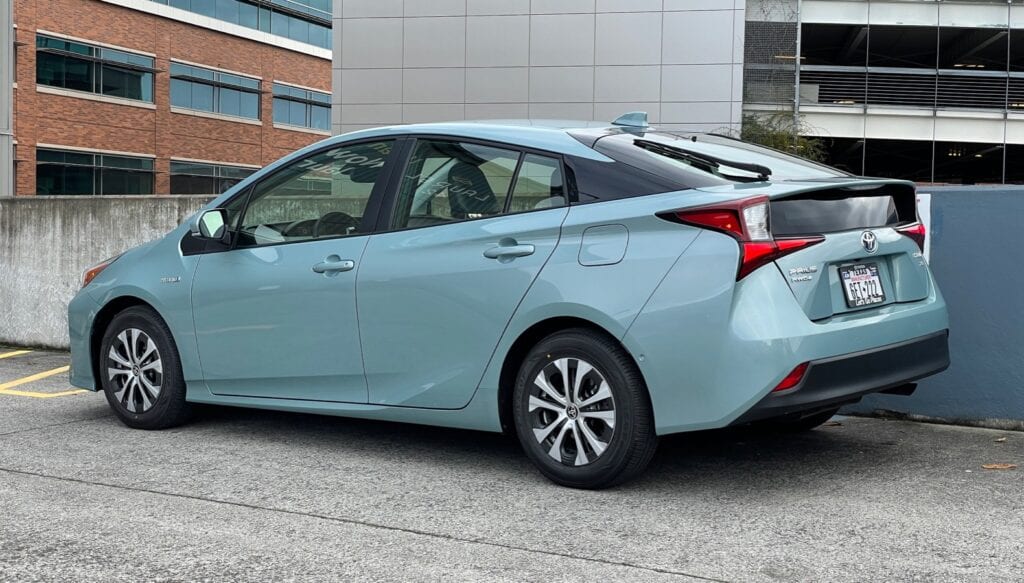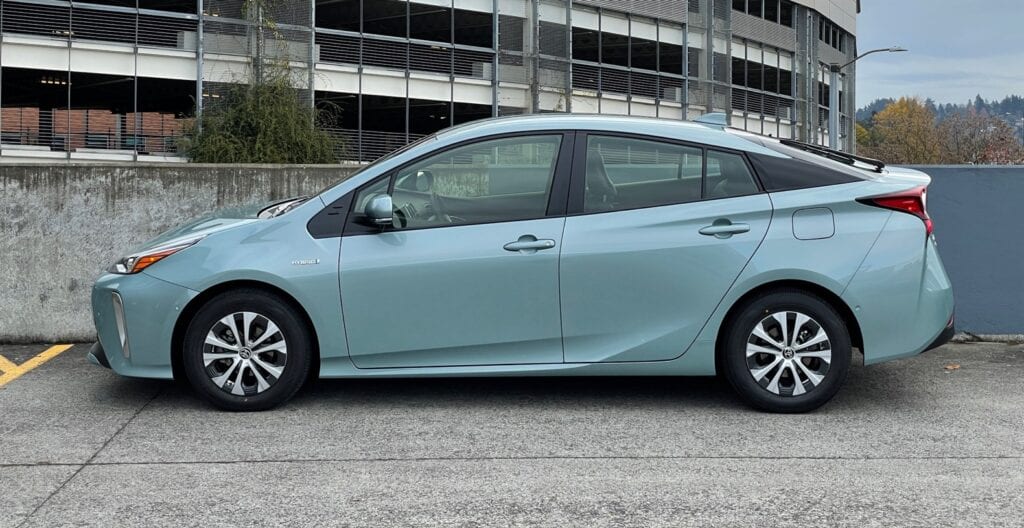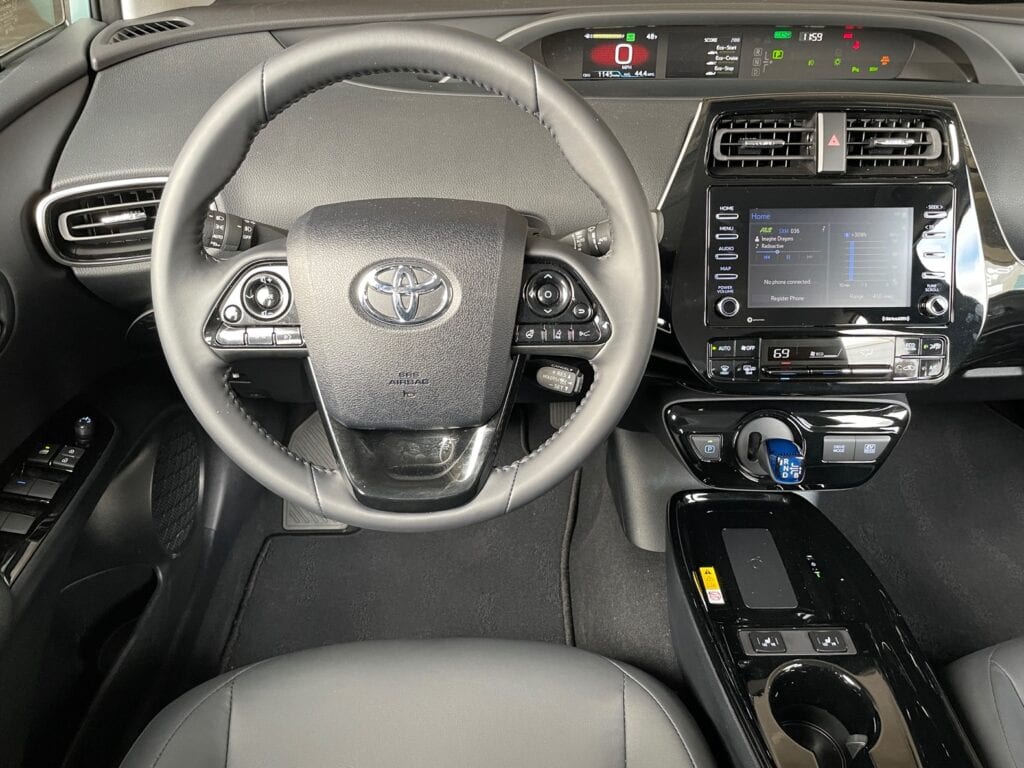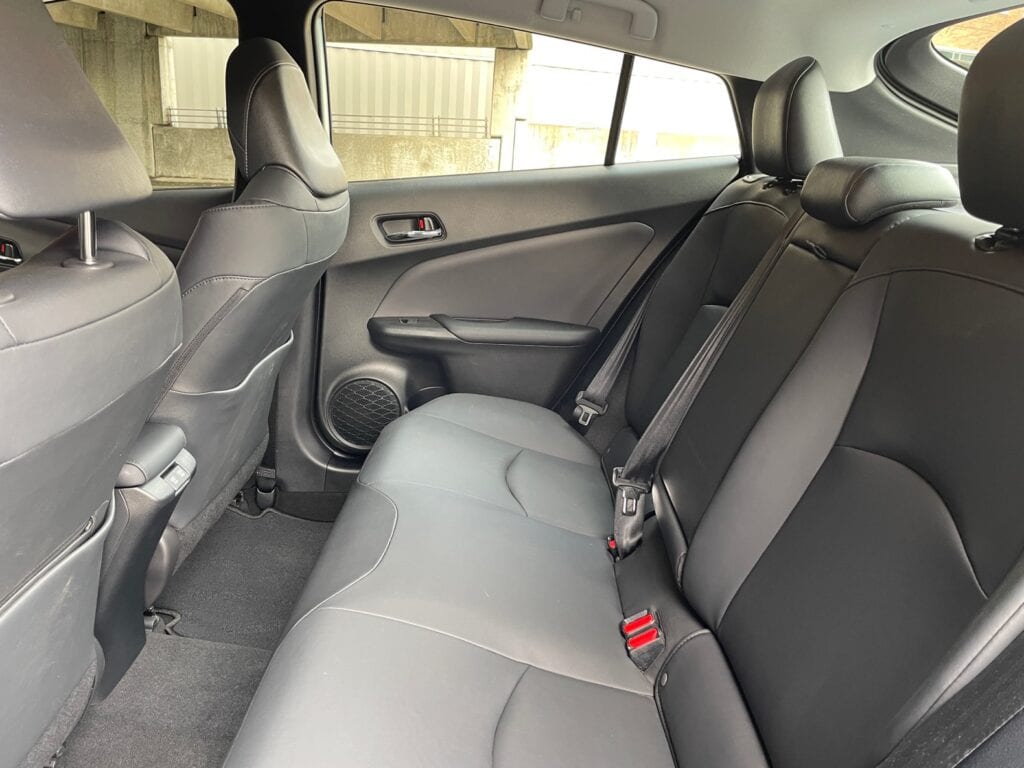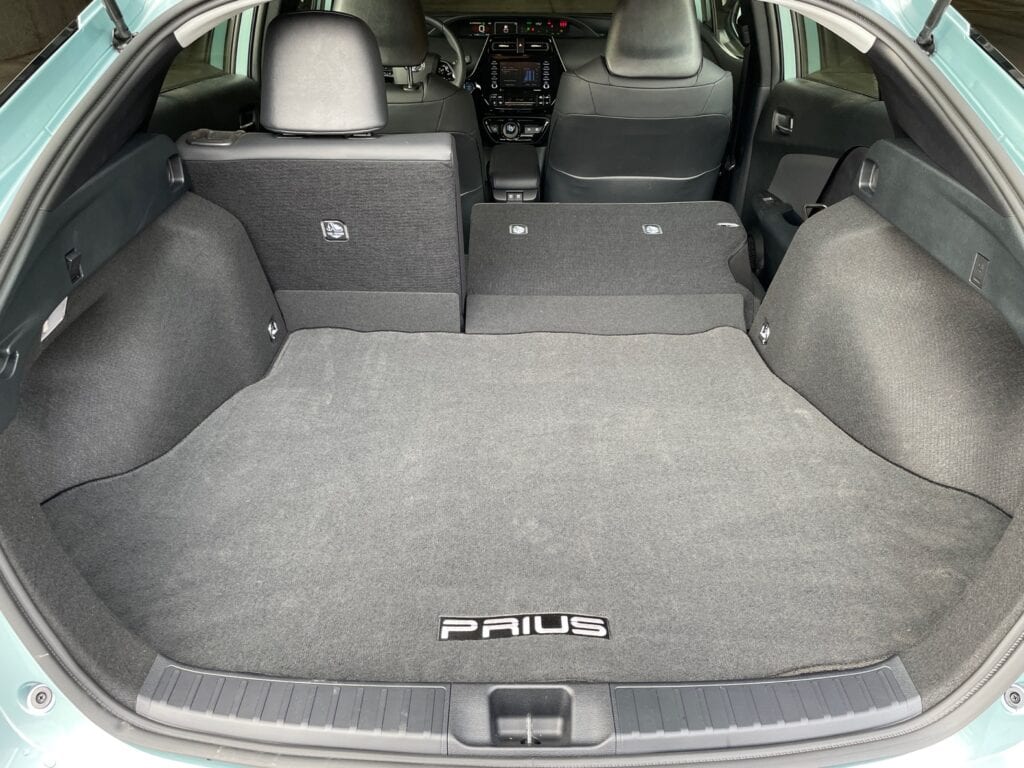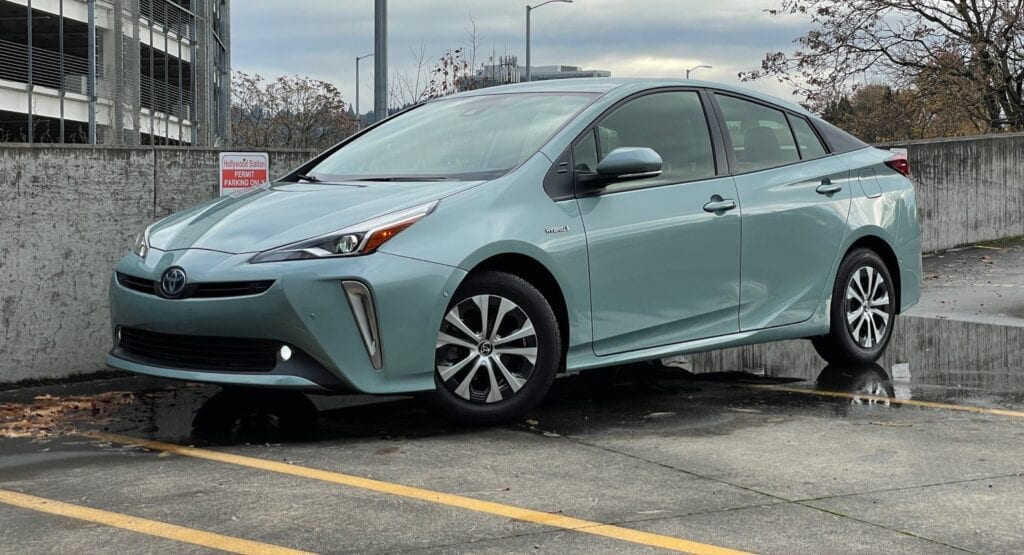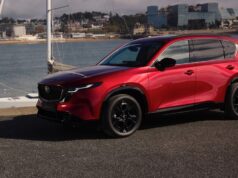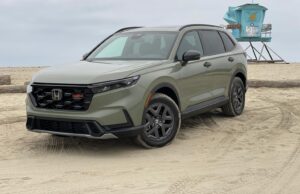The 2021 Toyota Prius appeals to shoppers looking for a no-frills commuter that excels at fuel economy. For 2021, Toyota Prius celebrates its 20th anniversary as one of the best-selling hybrids in the world. It’s been sold as a subcompact car, a wagon, a plug-in hybrid, and now the compact hatchback comes with all-wheel drive and just one body style. Once an icon of environmental sustainability, the Prius paved the way for other hybrids such as the Kia Niro Hybrid and Hyundai Ioniq, but has been surpassed in popularity by hybrid crossovers such as the Ford Escape, Honda CR-V, and the Toyota RAV4, which last year usurped the Prius for best-selling hybrid in the U.S.
The Prius has been a great car for a long time, but the market shift to crossovers and automakers’ ability to offer hybrid crossovers with much greater cargo and passenger volume has marginalized the Prius. It earns the moniker “appliance car” for its pokey but efficient performance and for its geometric style. Still, impressive standard safety and convenience features, as well as a roomy cockpit, still make it a great choice with the AWD-e making it even more attractive. Like other carryover Toyota models, the 2021 Toyota Prius finally comes with standard Android Auto to complement Apple CarPlay compatibility. Safety scouts will also celebrate because standard automatic emergency braking with pedestrian detection gets accompanied this year by traffic sign recognition, automatic high beams, and adaptive cruise control that can go down to a stop and restart without driver intervention.
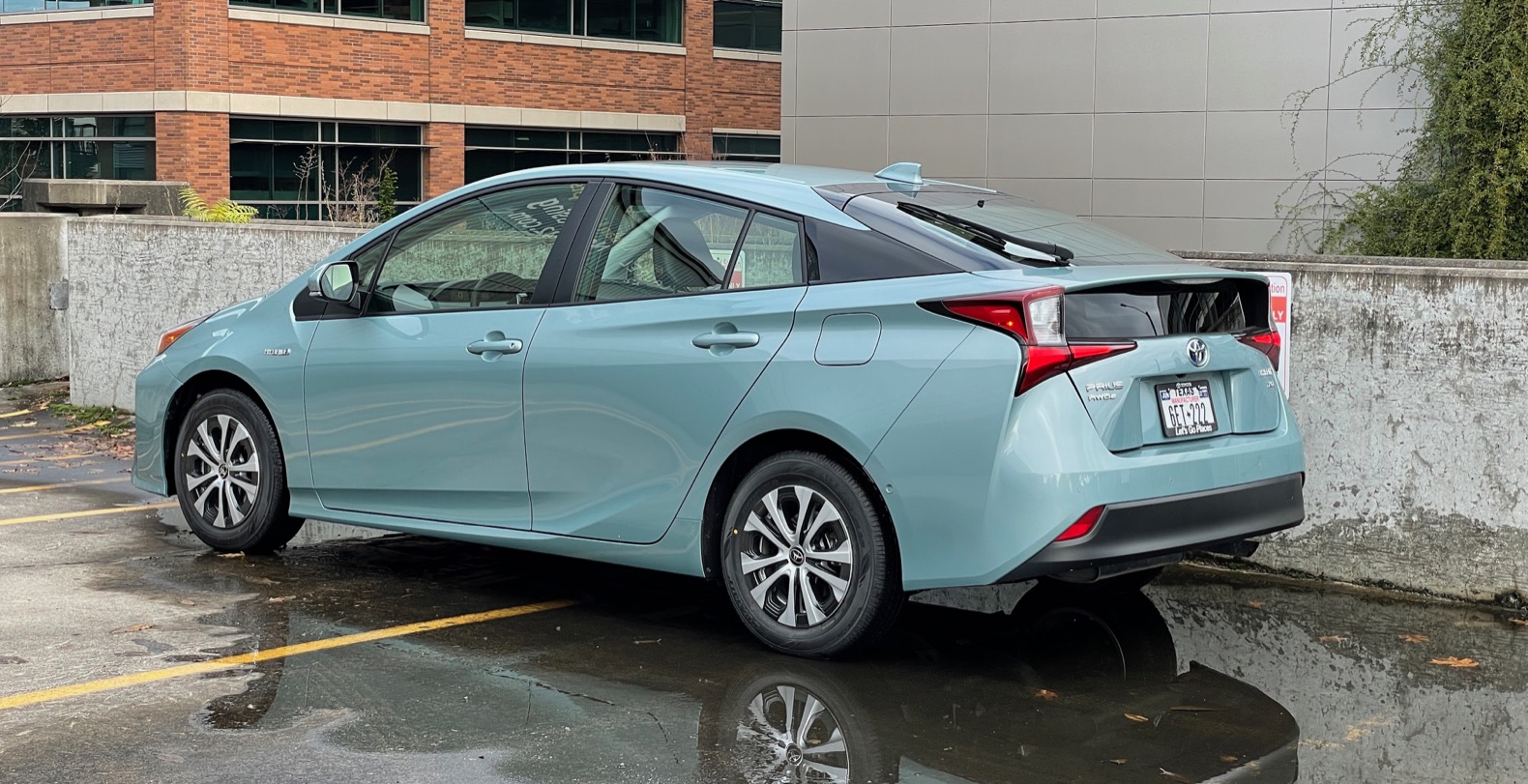
The Prius has a face only the wind could like, with a mishmash of triangular and rectangular shapes that meld at the rear into a split-glass hatchback. The inside gets a more attractive finish when equipped with the available 11.6-inch touchscreen, but it mostly feels like a cross between a budget car and a quirky eco car. A 1.8-liter inline-4, an electric motor and batteries conspire to make 121 horsepower and return up to 56 mpg combined with the base L Eco model. Available all-wheel drive (AWD-e) adds another motor on the rear axle for better grip and a slight boost in performance from the otherwise pokey Prius.
The cabin can fit five, but the sloping roofline trims head room in the rear, so we’d recommend it for two or a young family of four at best. With rear folding seats on all but the base model, cargo volume matches or exceeds that of many small crossovers. The Prius comes well equipped with a 7.0-inch touchscreen with Apple CarPlay/Android Auto/Amazon Alexa compatibility, keyless start, USB ports, and driver assist features such as automatic emergency braking with pedestrian detection, active lane control, and adaptive cruise control. The 2021 Prius comes in L Eco, LE, XLE, or Limited trim with a two-motor all-wheel-drive system offered in LE and XLE. The L Eco starts at $25,520, including $995 destination fee, and offers the best efficiency and best value in the family, especially compared to the $33,645 Limited model. The Prius Prime follows the same logic with a $2,300 upcharge on LE, XLE, and Limited trims.
The 2021 Prius has a front made for the wind. Toyota has shed the pod-shaped past of the Prius for a more angular look that is more busy than beautiful inside and out. The Prius has a low nose with a split triangular hood, and triangular headlights that wrap around high over the fenders. The fog lights are recessed in vertical triangles, then there are some triangular wedges down the body as it rises up in the rear to the taillights. The Prius Prime wears its geometry less pointedly, but both Prius styles fall apart at the rear, where a spoiler bands the taillights together and divides the hatch glass between a lower and upper hemisphere. It’s unique, but between the two the Prime look slightly more cohesive.
The 2021 Prius excels at what it is meant to do. For 20 years now, the Toyota Prius intended to conserve fuel while going from point A to point B. This turtle in the race doesn’t go anywhere fast, and the handling is as dull as a turles sandy dunes, but at least the current generation has a new platform that telegraphs the road better. Front-wheel drive is standard on the Prius, but all-wheel drive is available on the LE trim for $1,400 extra and on the XLE for $1,000 extra. It’s not offered on L Eco or Limited trims.
The Prius uses a 95-horsepower 1.8-liter inline-4 with a 53-kw electric motor powered by a 0.75-kwh lithium ion battery pack to bump total output to 121 hp. All-wheel drive models add a motor to the rear axle and a larger 1.2-kwh battery pack made of nickel-metal hydride cells that better withstands cold weather where all-wheel drive is favored. The Prius does a good job of getting grip on a slick start and holds the road in inclement weather better than front drive alone. Even though the Prius AWD-e is heavier, its dual-motor set up makes it quicker.
If speed and efficiency is what you want, consider an electric vehicle or plug-in hybrid with ample torque available off the line, such as the Prius Prime. If it’s Prius or bust, the AWD-e models are the quickest and provide better traction. The standard Prius can do it in about 10.5 seconds, while the L Eco takes an estimated 12 seconds. When not on the Prius drag strip, the fuel-sipper has decent acceleration at low speeds where it’s boosted by the motor and engine. At higher speeds such as during highway passing moves, the pokey engine requires some planning. Passing a trailer on a country road requires long open expanses with no oncoming traffic far far ahead. The Prius Prime has similar tendencies, though it’s quicker off the line.
Fuel economy is the benefit with up to 56 mpg combined is what defines the Prius and puts it at the top of its game. The 2021 Prius can get up to 56 mpg combined, according to the EPA. The L Eco trim tops the Prius efficiency scale with an EPA-rated 58 mpg city, 53 highway, 56 combined thanks in part to more aerodynamic features and low resistance rolling tires. Other trims with more content get 54/50/52 mpg, and all-wheel drive models lose 3 mpg tp 51/47/49 mpg. The 2020 Hyundai Ioniq hybrid compact sedan tops the Prius at 57/59/58 mpg. Most plug-in hybrids can double and triple the equivalent mpg of the Prius, such as the 2021 Toyota Prius Prime. That plug-in hybrid earns 133 MPGe and has 25 miles of all-electric range. Without enough electrons and switching back to gas, the Prius Prime gets 54 mpg. Our week of driving in an AWD-e XLE averaged us 50.3 mpg.
Good standard safety features complement good crash-test results in the 2021 Prius. The NHTSA and IIHS awarded the Prius mostly top marks in crash testing, and standard safety features help the Prius avoid crashes. When the IIHS last crashed the Prius in 2018, it got “Good” scores on five of the six crash tests, and an “Acceptable” on the small front overlap test for the Passenger. To qualify for a Top Safety Pick award in 2020, a vehicle has to get “Good” scores on all six tests. So even though the Prius has remained the same, the new testing protocol from the IIHS would not qualify it for a Top Safety Pick award. All Prius come with Toyota Safety Sense 2.0, a suite of driver assistance features that includes automatic emergency braking with pedestrian detection, active lane control, adaptive cruise control, and automatic high beams. Options include blind-spot monitors and parking sensors. Side and rear views can be tricky based on the shape of the split rear glass and thick rear pillars.
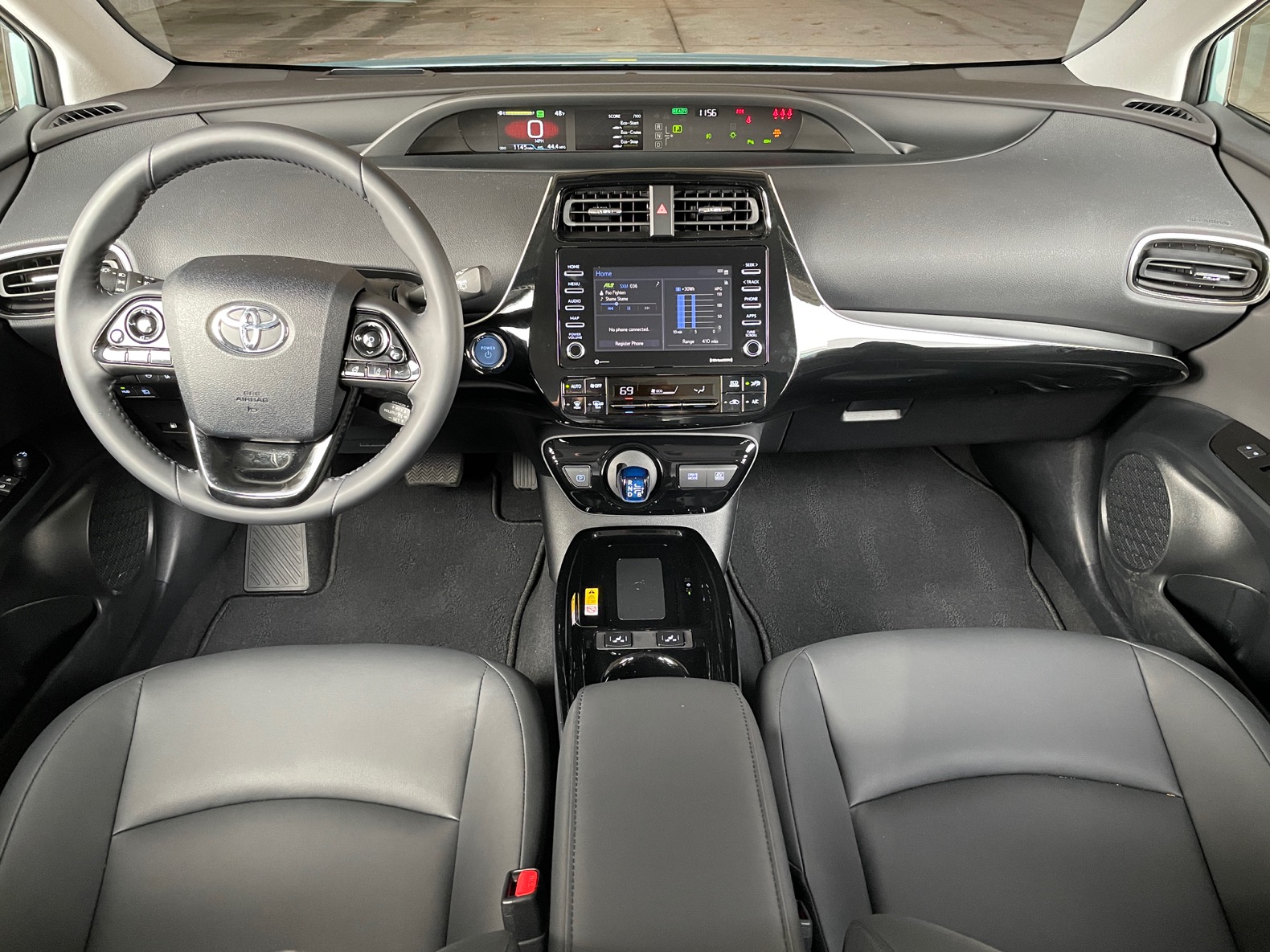
Inside the Prius and Prius Prime differentiate themselves by touchscreen. The 7.0-inch horizontal touchscreen standard on the Prius is embedded beneath the vents at the top of the center stack; in the Prius Prime, a vertical 11.6-inch touchscreen flanked by vents commands the cockpit. The larger screen comes on the Prius Limited as well. The instrument cluster exists at the top of the dash, where the windshield meets the cowl. The Prius hatchback has cargo volume like a small crossover but is more cramped in the rear seat. Five people can fit in the 2021 Toyota Prius hatchback, but the middle rider in the rear seat won’t want to be there long.
Standard front seats with manual adjustments are moderately comfortable. Higher trims come with 8-way power adjustable front seats for a bit more customization. With just 33.4 inches of rear leg room, the Prius doesn’t have the kind of passenger space as small crossovers. Taller passengers in the rear will feel cramped with limited head and leg room. Fortunately, for couples shopping the Prius, the 27.4 cubic feet of cargo space behind the rear seats is as good as many small crossovers and far better than even mid-size sedans. On all but the base L Eco trim, the rear seats split 60/40 and fold down to expand cargo space to 50.7 cubic feet. That splits the difference between the C-HR subcompact crossover and RAV4 compact crossover.
The L Eco base model is the best value for what the Prius does best. Upgraded standard safety features and good base features highlighted by Android Auto compatibility this year make the 2021 Toyota Prius a solid value. Offered in four trims; L Eco, LE, XLE, and Limited, and a special edition model this year, there’s a Prius for everyone, from the diehard to the noob. It starts in the most fuel-efficient L Eco trim, and since efficiency is the reason for existence of the Prius, we recommend the best at what it does best. It costs $25,520, including $995 destination, and comes with keyless ignition, 7.0-inch touchscreen compatible with Amazon Alexa/Apple CarPlay/Android Auto, three USB ports, Bluetooth connectivity, and the safety features mentioned above.
For $1,210 more, the LE loses 3 mpg combined but gains blind-spot monitors, parking sensors, and a 60/40-split folding rear seat that we wish was on the base model. All-wheel drive on LE is $1,400 more, but on XLE it’s only $1,000 more so XLE might compel shoppers of the all-wheel-drive Prius. Prius fans might be tempted by the 2020 Edition that honors the 20th anniversary of the U.S. launch of the Prius. It’s a 2021 model, but only 2,020 units will be sold at a cost of $30,870. It builds off the XLE trim and comes with blacked-out elements on the 17-inch wheels, headlights, pillars, and mirrors, as well as all the 2020 badging. A loaded Prius Limited costs $33,645 and adds a head-up display, keyless entry, a heated synthetic leather steering wheel and front seats, 8-way power driver’s seat, an 11.6-inch touchscreen and 10-speaker JBL sound system and other goodies. The Prius Prime plug-in hybrid adds about $2,300 on LE, XLE, and Limited trims.
It’s hard to believe that Toyota has been building the impressively economical Prius for over 20 years now. The 2021 Toyota Prius has definitely evolved over the years to become the pinnacle of efficiency and capability that it is now. With top of its class fuel efficiency, available all-wheel-drive, avant garde styling, and long list of standard safety features; the Prius is better than ever. While the masses embrace the crossover craze, the Prius does what it does best better than ever, getting you from point A to B reliably without breaking the bank.
For all your new car shopping needs, check out: drivevise.com Vehicle shopping made simple!

